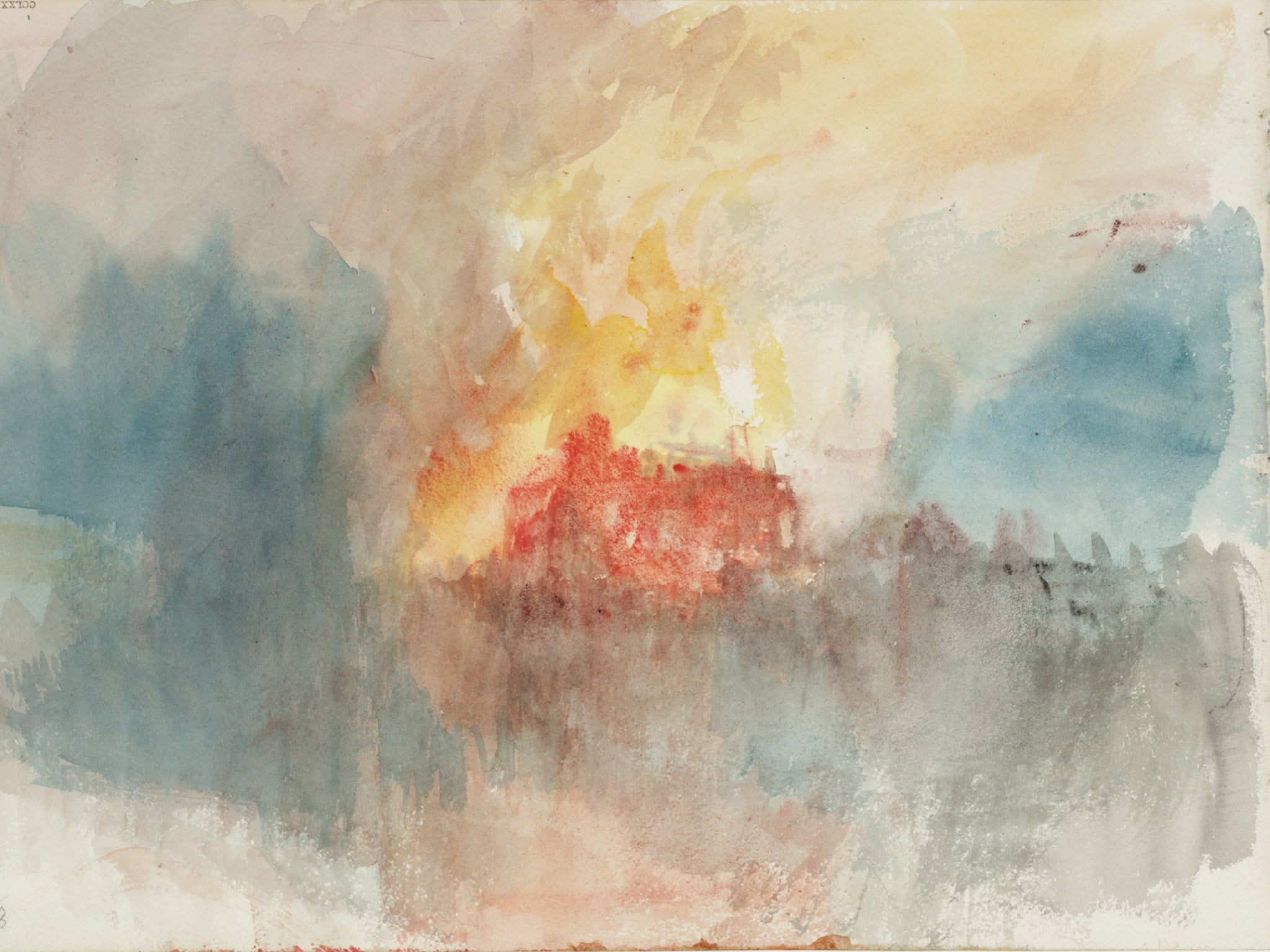Mystery of JMW Turner's famous 'Burning of the Houses of Parliament' solved at last
Paintings are actually scenes of a different fire at the Tower of London

When the old Parliament building accidentally became engulfed in flame on 16 October 1834 JMW Turner rushed out to join the throng of people looking on that evening in amazement.
From his rented boat on the Thames, the great English artist gained inspiration for two oil paintings and a series of watercolours collectively called The Burning of the Houses of Parliament. At least that’s how the story went – until today.
Detective work worthy of Sherlock Holmes has now established that while there is no question mark over the paintings, from the Surrey side of the Thames, the watercolours actually depict a fire at another landmark – the Tower of London – seven years later on 30 October 1841.
The nine 19th century watercolours, from the JMW Turner bequest, were first catalogued by AJ Finberg in 1909, who believed they captured the destruction of the Palace of Westminster, Parliament’s ancient home. Tate cataloguer Matthew Imms has finally uncovered the truth.
His research was part of the comprehensive cataloguing of the more than 30,000 works in the bequest and two of the watercolours in question form part of an upcoming Tate exhibition focusing on Turner’s later work from 1835 to 1850.
Mr Imms said there had long been doubts about Finberg’s identification. He told The Art Newspaper: “Andrew Wilton, the original keeper of the Turner bequest when it was moved to the Tate in the 1980s, had written several times that he didn’t necessarily think that it was the Parliament fire, but he couldn’t come up with any viable alternative.
“We could tell that the works were fairly late in Turner’s career so I cast around for other events at that time, and came across various images, popular prints and so on of the Tower of London fire in 1841.
“It immediately clicked, because the various uncertain features of the architecture and so on matched quite well.”
Turner had actually painted the burning of The Grand Storehouse, a building in the late 17th century English Baroque style with its red brick with stone dressings. It held the historic armoury collections of cannons, guns and rifles that had been used in previous campaigns.
Mr Imms said: “Whether there was anything flammable among those, I’m not sure, but they kept tents in the roof, so that would be good kindling. The cupola and long, tall windows of the ill-fated building are the dominant architectural details in the watercolours, but more familiar buildings also stand out. There’s a classical pediment in one of the watercolours, with what seems to be the White Tower in the background.”
It was this White Tower, the old keep at the Tower of London built by William the Conqueror during the 11th century, that confused experts for more than 100 years.
Mr Imms said: “People thought it was Westminster Abbey, but the turrets are too small and far apart, so we think it’s the White Tower.”
The date of the fire also corresponds with Turner’s known movements at the time. Mr Imms said: “He was just back in London, having been away in Switzerland for the summer. And a letter confirms that he wanted to return to the scene. He received a letter from the Duke of Wellington on 3 November of 1841 [Wellington was the commandant of the Tower] refusing to let him come in, and it said no one may be admitted except on business. That showed that he had applied quite rapidly after the fire to be admitted to the grounds.”
Some of the nine 19th century watercolours will take pride of place at the Tate Gallery later this year. The EY Exhibition: Late Turner – Painting Set Free opens on 10 September until 25 January 2015 and is the first major exhibition to survey the achievements of Turner’s last works. A spokeswoman for the Tate said a number of the watercolours will be redated following the research.
Subscribe to Independent Premium to bookmark this article
Want to bookmark your favourite articles and stories to read or reference later? Start your Independent Premium subscription today.

Join our commenting forum
Join thought-provoking conversations, follow other Independent readers and see their replies